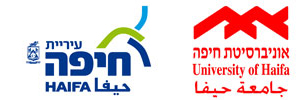 Ronnie Ellenblum is a professor at the Department of Geography at the Hebrew University of Jerusalem. Prof. Ellenblum is specializing in the geography, history, and archaeology of the Crusades and in urban geographical history and in environmental history. The Cambridge University Press published three of his books: one on the agricultural settlements during the Crusades(1998) the other (in 2007), deals with medieval castles and the modern interpretations of the Crusades and the third entitled The Collapse of the Eastern Mediterranean Climate Change and the Decline of the East, 950-1072 was published in 2012. Ellenblum initiated several research projects, which he heads. In the scope of the Historic Cities research project he initiated the Jerusalem Library together with Prof. Sari Nusseibah of Al-Quds University, and the library of the Maps of Jerusalem.
Ronnie Ellenblum is a professor at the Department of Geography at the Hebrew University of Jerusalem. Prof. Ellenblum is specializing in the geography, history, and archaeology of the Crusades and in urban geographical history and in environmental history. The Cambridge University Press published three of his books: one on the agricultural settlements during the Crusades(1998) the other (in 2007), deals with medieval castles and the modern interpretations of the Crusades and the third entitled The Collapse of the Eastern Mediterranean Climate Change and the Decline of the East, 950-1072 was published in 2012. Ellenblum initiated several research projects, which he heads. In the scope of the Historic Cities research project he initiated the Jerusalem Library together with Prof. Sari Nusseibah of Al-Quds University, and the library of the Maps of Jerusalem.
Ellenblum also heads the Vadum Iacob archaeological expedition, and recently he initiated another digital project: the Revised Regesta Regni Hierosolimtani Database.
Fragile Affluence: An outline for an Environmental History of the Mediterranean basin
During the last two decades, the discourse on the possible influence of climate change on the fates of civilizations has returned to the forefront of general scientific debate, after many decades in which historians and geographers dealing with the topic had regarded it as “determinist.” Most of the common interpretations of the history of the Mediterranean ignore the role of the strong climatic fluctuations that affected this region, or do not assign great importance to them.
This paper relies on rich historical and archaeological evidence to suggest a novel interpretation of the history of the Mediterranean, emphasizing two periods of major climatic changes – the Roman Optimum, which I date to between the late 380s BCE and the 370s CE, and the main phase of the Medieval Climate Anomaly (11th century CE). The detailed annalistic tradition and rich archaeological evidence of the Romans is harnessed to show how the stabilization of the climate, and the rise in the amount of rainfall was translated into societal affluence. The length of the Roman Optimum, which is perhaps the longest documented period of climatic stability, can explain some unprecedented geographical developments as well as the creation of a discourse of affluence.
The annalistic tradition of Middle Eastern civilizations is similarly harnessed to reconstruct both the series of the climatic disturbances themselves and the processes that led to the decline of complex societies. The disastrous effects of the 11th century might indicate the existence of a diagonal dividing line that separates the eastern Mediterranean (including Sicily and southern Italy) from the western half.


